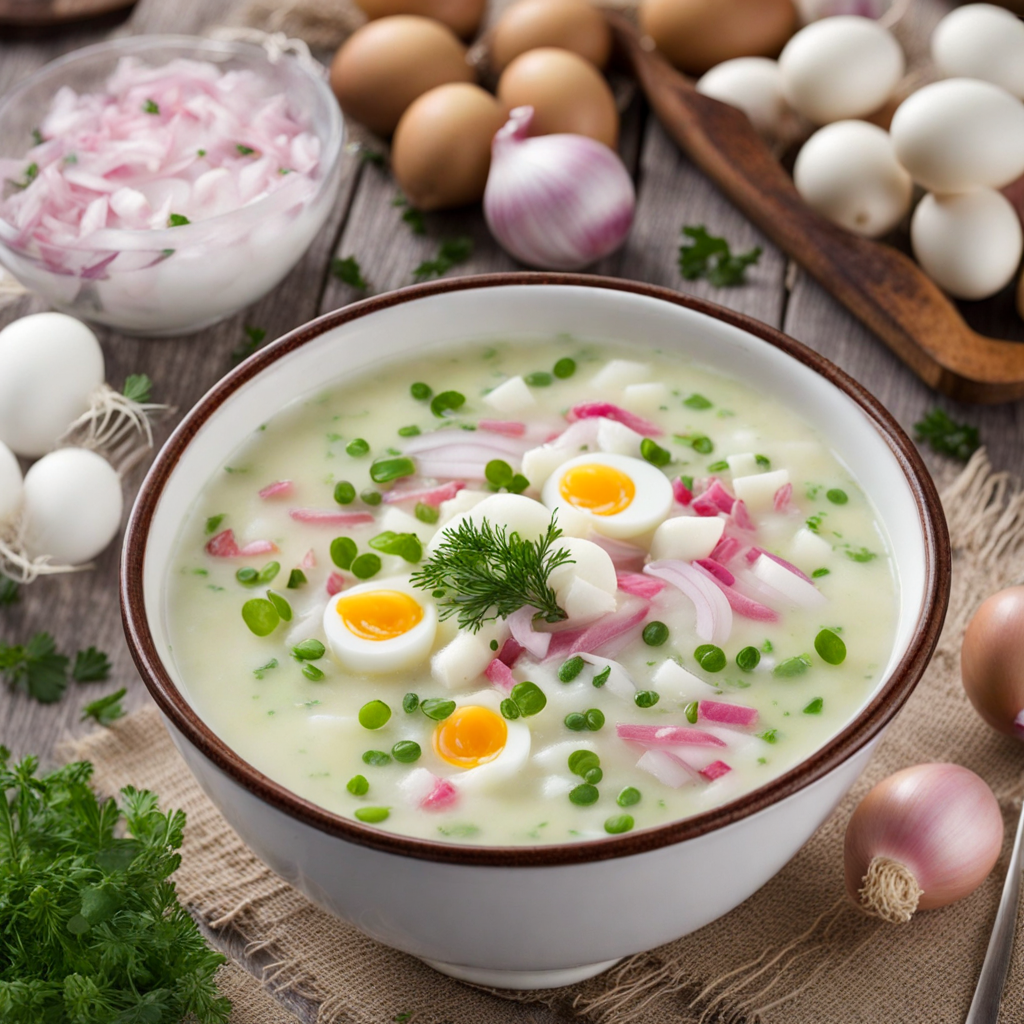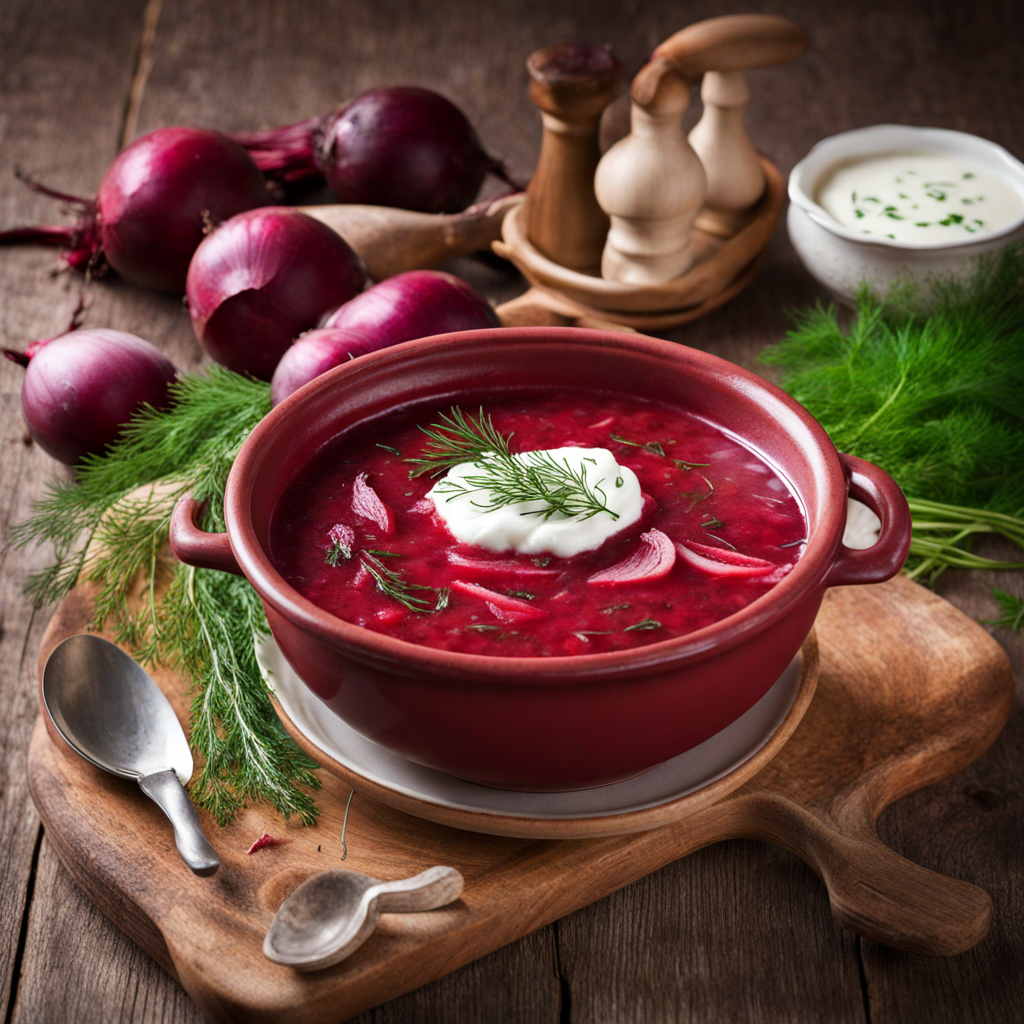Verguny
Verguny are a delightful Ukrainian treat that perfectly encapsulate the country's rich culinary heritage. These crispy, pastry-like snacks are made from a simple dough of flour, eggs, and sour cream, which is then rolled thin and twisted into intricate, spiral shapes. Once shaped, they are deep-fried until golden brown, resulting in a satisfyingly crunchy texture that contrasts beautifully with the light, airy interior. Often dusted with powdered sugar or served with a side of honey, Verguny provide a delightful balance of sweetness and a hint of tang from the sour cream, making them an irresistible indulgence. The taste of Verguny is a harmonious blend of flavors and textures that showcases the traditional Ukrainian approach to dessert-making. Each bite delivers a satisfying crunch, followed by a light and tender chewiness that keeps you coming back for more. The subtle richness from the egg and sour cream complements the sweetness of the powdered sugar, creating a flavor profile that is both comforting and familiar yet distinctively unique. They are perfect for any occasion, whether enjoyed as a snack with tea or as a festive dessert during celebrations, embodying the warmth of Ukrainian hospitality. What makes Verguny truly special is their versatility and the joy they bring to gatherings. While the classic version is beloved, many modern variations incorporate flavors like vanilla, citrus zest, or even poppy seeds, offering an exciting twist on the traditional recipe. These treats not only serve as a delicious reminder of the deep-rooted culinary traditions of Ukraine but also as a canvas for creativity and innovation in the kitchen. Whether you're sharing them with friends or savoring them alone, Verguny promise a delightful experience that invites you to explore the flavors of Ukraine.
How It Became This Dish
The History and Cultural Significance of Вергуни (Verhuny) #### Origins and Early Development Вергуни, commonly known as Verhuny in English, are traditional Ukrainian pastries that hold a cherished place in the country’s culinary landscape. With their distinctive twisted shape and delightful crunch, they are not just a treat but a symbol of Ukrainian hospitality and festive celebration. The origins of Verhuny can be traced back to the rural communities of Ukraine, where they were often made during special occasions, including weddings, holidays, and family gatherings. The name "Verhuny" is derived from the Ukrainian verb "вертати," meaning "to twist" or "to turn." This reflects the characteristic shape of the pastry, which is achieved by twisting strips of dough before frying them in oil. The basic ingredients of Verhuny include flour, eggs, sugar, and sour cream, which together create a rich, flavorful dough. The frying method gives them their signature crispy texture, while the dusting of powdered sugar on top adds a touch of sweetness. #### Cultural Significance Verhuny are more than just a delicious snack; they are steeped in cultural significance. In Ukrainian folklore, food plays a vital role in community and family bonding, and dishes like Verhuny are often associated with hospitality and generosity. They are a staple at festive gatherings, symbolizing warmth and the joy of sharing. During significant life events such as weddings, Christenings, and Easter celebrations, Verhuny are often prepared in large quantities. They embody the idea of abundance and are offered to guests as a token of goodwill. In a traditional Ukrainian home, the act of preparing Verhuny can be a communal activity, involving family members coming together to knead the dough, shape the pastries, and fry them. This process strengthens familial bonds and preserves culinary traditions that have been passed down through generations. #### Evolution Through Time As with many traditional foods, the recipe and preparation of Verhuny have evolved over time. Originally, these pastries were made with simple, locally sourced ingredients that reflected the agricultural lifestyle of rural Ukraine. Over the years, as urbanization increased and food production methods evolved, the recipe for Verhuny adapted to include new flavors and variations. In the 19th and early 20th centuries, Ukrainian cuisine began to garner attention beyond its borders, particularly due to the diaspora that spread across Europe and North America. Ukrainian immigrants brought their culinary traditions with them, and Verhuny became a beloved treat among expatriate communities. In these new contexts, they often fused with local ingredients and practices, leading to creative adaptations. For instance, variations might include the addition of spices or fillings such as jam or poppy seeds. In the post-Soviet era, as Ukraine regained its independence in the early 1990s, there was a resurgence of interest in traditional Ukrainian foods, including Verhuny. This revival was part of a broader movement to reclaim and celebrate Ukrainian cultural identity following years of Soviet influence. Home cooks and chefs began to emphasize the importance of regional ingredients and traditional cooking methods, leading to a renewed appreciation for Verhuny as a symbol of national pride. #### Modern Interpretations Today, Verhuny can be found in bakeries and homes throughout Ukraine, often enjoyed with tea or coffee. Modern interpretations of Verhuny may include creative twists, such as flavored doughs infused with vanilla or citrus, or innovative fillings that reflect contemporary tastes. However, the traditional recipe remains popular, cherished for its simplicity and nostalgia. The rise of social media has also played a significant role in the resurgence of interest in Verhuny and other traditional Ukrainian foods. Home cooks and food enthusiasts share their recipes and cooking tips online, fostering a virtual community that celebrates Ukrainian culinary heritage. This has led to a greater appreciation for the cultural significance of dishes like Verhuny, as younger generations seek to connect with their roots through food. #### Verhuny in Ukrainian Festivals Verhuny are often associated with various Ukrainian festivals and celebrations. For example, during Easter, families may prepare large batches of Verhuny to share with friends and neighbors as a symbol of renewal and joy. Similarly, during the harvest season, they are made to celebrate the bounty of the land and the hard work of farmers. In these contexts, Verhuny serve not only as food but also as a medium for storytelling and cultural expression. In recent years, food festivals in Ukraine have showcased Verhuny alongside other traditional dishes, allowing chefs and home cooks to demonstrate their skills and share their love for Ukrainian cuisine. These events foster a sense of community, bringing people together to celebrate their shared heritage through food. #### Conclusion The history of Вергуни is a testament to the resilience and adaptability of Ukrainian culinary traditions. From their humble beginnings in rural kitchens to their place on the tables of festive celebrations, Verhuny embody the spirit of Ukrainian hospitality and cultural identity. As they continue to evolve, these delightful pastries remain a cherished symbol of connection, community, and the timeless joy of sharing good food with loved ones. In a world that is constantly changing, Verhuny remind us of the importance of preserving our culinary heritage and the stories that come with it. They connect generations, bridging the past and the present, and serve as a delicious reminder of the rich tapestry that is Ukrainian culture. Whether enjoyed at a family gathering or a festive celebration, Verhuny will undoubtedly remain a beloved part of Ukraine’s gastronomic landscape for years to come.
You may like
Discover local flavors from Ukraine







